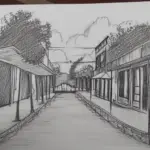It is possible to think of all activities and actions life as accessories to the pursuit of wellness. When we are not well we are by definition in some form of pain, be it physical, mental, emotional or spiritual. As such it naturally arises that throughout our entire lives, even if we do not realize it, we are devoted to returning not to the point of equilibrium between pain and wellness, but rather to what should be thought of as a baseline value of wellness, as an equilibrium would suggest that there is an optimum balance between the two when in reality we intrinsically know the opposite. There is no ‘good’ amount of pain and no ‘bad’ amount of wellness.

The pursuit of wellness has taken many forms and will inevitably vary from person to person depending on their race, religion, culture, nationality and so on. Some people, often those without ease of access to many first-world amenities that we take for granted such as food, water, shelter and warmth, may find escape from pain to be a less physical and more ephemeral inquiry. This is not to say that those living comfortable lives in modernized countries will not relish a spiritual pursuit to bring them happiness and wellness, but the fact simply remains that pain and wellness are irrevocably a relative issue between those who have and those who have not.
Conversely the escape from pain is eclipsed by the acquisition of wellness in modern, stable regions of the world. Here the physical takes on a more prominent position and can override more virtuous ideals. The reductionist view that ‘pain is bad and should be avoided at all costs’ is superseded the idea that wellness should be attained, given that pain is now purely self inflicted in the modern world, that is to say, we now have the luxury of choosing how and when we experience pain; wellness has become the prize that is sought by the masses in a very material sense.












